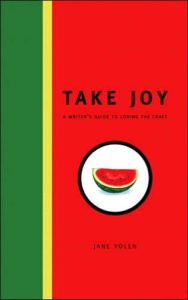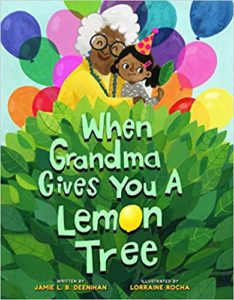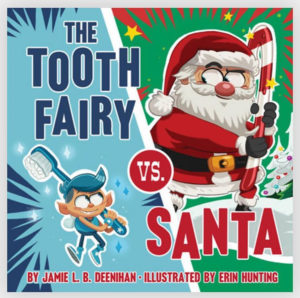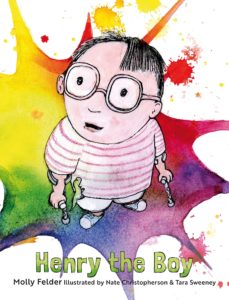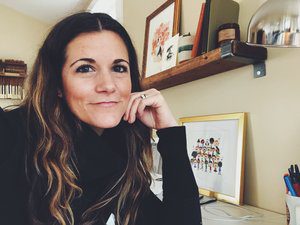
This month’s Industry Insider interview is with Christy T. Ewers, an artists’ agent who is the owner of The CAT Agency, Inc. She’s been surrounded by artists her entire life, with a mom who has a Fine Art degree, a husband who’s a filmmaker, and a pair of book-loving children (one has a deep appreciation for unicorns and the other “enjoys using every crayon in the box”). You put anyone in that environment and they’re pretty much going to come out as an artists’ rep!
That’s probably all you really need to know in terms of pre-interview stuff, though there is a good bit on her LinkedIn page about HTML, Java, and C++ skills (that kind of thing always impresses the heck out of me). So we could just move on to the interview … but here at OPB, we do more than the average bear does. And after extensive research (I Googled for about nine seconds), I’ve determined that when the average bear creates a list, they’ll only use three items. OPB can top that. So here are four—count ‘em, FOUR!!!!!—bonus facts about Christy to better prepare you for the almost-ready-to-start interview.
Christy loves:
- seaside escapes
- very hot coffee
- pitbulls
- handwritten notes
With that, let’s get to the OPB interview with our new favorite artists’ agent, Christy!
website: www.catagencyinc.com
Facebook: www.facebook.com/CATugeau
Instagram: @the_cat_agency
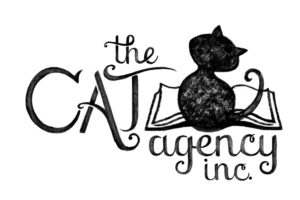 RVC: Let’s talk about the elephant in the room. You’re half of The CAT Agency, the first mother/daughter agency in the kidlit business. Describe what that’s like on a day-to-day basis.
RVC: Let’s talk about the elephant in the room. You’re half of The CAT Agency, the first mother/daughter agency in the kidlit business. Describe what that’s like on a day-to-day basis.
CTE: Well, a lot of what makes working with my mother so successful is that we have separate offices in separate places. Haha! But it’s not what you think – we get along famously – it’s just that if we were in the same office, neither one of us would get any work done. We like to talk! So when we DO work in the same place, there’s a lot of good-hearted goofing off.
Also, after 25 years at the helm, she’s now enjoying semi-retirement and/or “working from the boat” where she can often be found cruising around with my dad. No one is more deserving of R&R, and she can enjoy it, knowing that I’m very happy behind the wheel in my little office nook.
RVC: Sounds delightful!
CE: It is! One of the things I love most about my job is that the day-to-day is different every day. Some days are promo days, where I spend the hours putting together blasts, or postcard mailings, or going into NYC to meet with editors and art directors. Some days, I focus purely on sending out dummies and pitches. Some days, it’s all about accounting; invoicing, cutting checks, balancing the books. Some days I read a lot of contracts – and negotiate terms. Some days I dedicate to reading manuscripts and dummies and providing feedback and notes. Some days I’m a cheerleader or a therapist, or both! Some days, I get to be the delivery person of amazing news, and some days, not so amazing.
And then there’s the occasional Field Trip Day to the local bookstores, where I get a latte, and dig in in the children’s section. I love the daily variety of being an agent. But every day consists of replying to email, talking to my mom 30x on the phone, participating in social media, and staying up way too late replying to submissions. There are always some constants!
RVC: Though you have author/illustrators on your client list, you’re not currently representing text-only authors. As someone with a degree in English/Journalism, do you ever ache to just work on the word side of the picture book equation?
CTE: Good question! I find that I feed that hunger in helping our author/illustrators – and also helping those who submit dummies to us. I spend a lot of time working with people in helping them to write – but I also spend a lot of time learning as much as I can, too. I read about writing, research, go to conferences, and listen to authors and editors speak, etc. So it’s really also about continuing education for me, and I enjoy that immensely. I have so much to learn, and such great resources! I find it satisfying to learn as much as I can, and then apply that in helping people who are writing for children. It’s very different from the literature I studied in school and the creative writing I have done…writing for children is much, much harder!
Honestly, I love the art part. Art has always been a major part of my life. If I ever just worked on the word side of the equation, I would miss working with artists immensely. I think I’d feel like a glass half empty – whereas now, I’m full to the brim!
RVC: Beyond your degree in English/Journalism from the University of Delaware, what was the best life or career experience(s) in terms of preparing you to succeed as an agent?
CTE: Oh boy, this one is going to make my parents chuckle – but hands down – Assistant Managing a fine-dining restaurant. When I was in college, my parents urged me to get a summer internship in NYC (I’ll give you one guess as to what industry my mom was pushing!). So what did I do? I spent my summers living in practical squalor on Nantucket Island, where I spent my days at the beach, and my evenings as the Assistant Manager at a very popular fine-dining restaurant. My parents were thrilled, let me tell you! But honestly, there was no better preparation for life, let alone agenting than those 4 summers.
First of all, I had to have confidence in myself – or at least pretend to – because I had to finagle my way into that job, even though I was woefully inexperienced. And then I had to learn quick! Right out of the gate, I had to learn how to liaise between the kitchen staff, and the wait staff – which anyone who has ever worked in a restaurant understands is a difficult undertaking! I had to smile while restaurant-goers screamed at me after I told them that there were no open reservations – and then I had to “find” them a table. I had to put out literal and figurative fires, keep my cool, and multi-task more than I ever had. I learned to work harmoniously with everyone from the bus boys, to the bartenders, to the line cooks, to the owners, to the doormen. I really listened to people with more knowledge and experience than me, and began to understand that no one reaches a point in which they have nothing left to learn. I embraced being human; to always keep things in perspective, and to laugh. Because sometimes, the only thing there is to do is laugh. I learned that at the end of the day, none of what I was doing was life and death, but people’s livelihoods depended on the job that I did. And I took it very seriously.
By the end of my last summer, I was hiring people, training people, and feeling an immense sense of pride at the end of each night, no matter what happened. I came to see the challenges of the job as a positive thing, and learned SO much from each and every one of them. Even though I held this position nearly 15 years before becoming an agent, working in a restaurant set the blueprint for who I am today. It made me a better person – and a much more diplomatic, understanding and patient one. All of the skills that I acquired and honed in that job, (including learning a LOT about wine) I have applied to my life and career every day since.
Plus, that’s where I met my husband…he was a waiter! So…it was a real win/win/win/win/win/win for me.
RVC: What’s the most challenging aspect of being an agent?
CTE: Hmmm. I’d have to say convincing people with immense talent that they are not totally untalented and worthless; which usually immediately follows a rejection. I completely understand how it feels to be on the receiving end of a rejection – and how difficult it is to put one’s heart on their sleeve the way that authors and illustrators do. This is definitely a crux in most artistic and creative lives, but I see so much self-doubt and self-deprecation oftentimes when it’s completely uncalled for! I find it challenging to combat that in an effective way. Thank goodness for Jane Yolen for ALL things, but I appreciate that she openly (and often hilariously) posts about her rejections and woes. I think that really helps ease the sting for other authors and creatives! We have a tendency to share only good things – which is human. But the flip side of that is that when we only share things to celebrate, rejections seem fewer and farther between – when in fact, they are tenfold! It’s hard to convince people that they are not alone – and that it happens to the best of them!
RVC: While we finally met face-to-face at the 2019 SCBWI regional conference in Miami, I’ve known about you and your agency for far longer than that thanks to your third Thursdays “Ask CAT” posts on Kathy Temean’s blog/newsletter. How did that relationship come about?
CTE: My mom was on faculty at the NJ SCBWI conference many many years ago when Kathy was an RA, and they hit it off! They go way back – and have much respect for one another personally and professionally. Just like Kathy, my mom has always been very active in sharing her knowledge and skills, so it only made sense to contribute to Kathy’s incredible blog. We admire Kathy greatly and would do anything for her – and we are always happy to help her readers in any way we can.
RVC: I saw on your agency’s blog (The Way Tugeau) that you reposted a piece you did for Kathy on the difference between a licensing contract and a publishing contract–something that really confused some people. In a nutshell, what’s the difference? And why are people confused about it?
CTE: In a nutshell, licensing is a whole different ballgame. I think that the biggest difference is that in licensing, you’re negotiating the term of the license from the perspective of knowing its end-point. You’re also licensing your work in terms of usage. And those factors determine the compensation. In trade publishing, at least, the terms are more boilerplate. If you retain the copyright to your work, you are licensing it to the publishing of the book, and book materials, usually worldwide. And the terms of the license end when the book goes out of print. This doesn’t determine the compensation for the book – other variables come into play as far as that negotiation goes.
RVC: Are you noticing any particular trends in the picture book market now? (I’ve recently seen a few books that have a decidedly comic-book style to them, but I’d really suggest that it’s the marked rise of interest from publishers in the work of author/illustrators.)
CTE: Graphic novels (even in the younger genres) are all the rage now, yes. And it’s about time! They tap into a whole new market of children who read in a less traditional way. And it’s wonderful! I have a resistant reader, and she loves the graphic novel format. I’m so relieved that this “trend” is here to stay! It’s also a wonderful showcase of highly crafted writing, and beautiful illustrations. It takes special people with very special talents to create a successful graphic novel!
You’re right that there is a bit of an influx of author/illustrators. It makes sense. If an editor is presented with a dummy, and they like the story AND the art, then voila! It’s a one-stop-shop. But I think that’s also happening because some editors are starting with artwork. I know several who will see the work of an illustrator and/or a visual story, and say “do they write!?!” and if they don’t, the editor will say “do they want to?!”. There are a lot of editors out there right now who are willing to help illustrators write, based on beautiful visual stories that they have already created. I really love this trend, especially for picture books, because the illustrations ultimately drive the story. It kind of makes sense to start there, right?
I’m also seeing an influx of Own Voices, diverse stories, and books that are visually representing the world we live in. HOORAY! I don’t even want to use the word “trend” with any of these things, though, because that implies that it’s temporary. None of these things I have mentioned should be temporary.
RVC: Could you talk about your role in pairing a picture book artist with a writer via a publisher? Do publishers ever come to you and say “We’ve got a book by so-and-so about subject X. Do you have a client who’d be ideal for that?” Or do they come with a specific client of yours in mind? How does it all work, and how can you promote your clients to create new opportunities for them versus waiting for opportunities to arrive? (Lots of big questions—I know!)
CTE: These are great questions! It’s a little bit of both. I’d say 50/50. Sometimes, editors and art directors come to us and say “We are on the search for an illustrator who can do XYZ and ABC – got any suggestions?” and then I say “Heck yeah!” and send along links and samples and it goes from there. Oftentimes, I get the emails with a specific inquiry – asking if so-and-so is available and interested in a specific manuscript. Other times, it’s an “audition” scenario where I’m contacted regarding several illustrators, and they would like them to create samples for a project (along with artists from other agencies) and then we see that play out.
My job as an agent is to make sure that I’m promoting, promoting, promoting, without being annoying. So I’m either arranging postcard mailings, sending blasts, visiting publishers to show portfolios and dummies in person, or just doing direct-reach-outs to art buyers to remind them of the talent in our group. It’s a trick to stay in the forefront of people’s minds when they are looking for an illustrator, while making sure that I’m not being too “agent‑y”!
RVC: I hear that artists are sometimes as reluctant as writers to promote themselves. So let’s help them! What’s one thing an early-career artist can do to get noticed by an agent or other industry professional? What’s worked on you?
CTE: Everyone is going to hate me, but BEAUTIFUL ARTWORK!! That certainly catches my eye. That, and a personal email/cover letter. We always try to look at everyone’s work and get back to everyone with a thoughtful and personal response (even if it’s a pass), but if someone takes a minute to actually look at the people we represent and researches our agency a little, and mentions that in their email, it means a lot. It’s clear when it’s a mass submission, and not only does that bum me out, but I see that as a missed opportunity for the artist. When I see a mass submission (especially beginning with “Dear Sirs”) I’m less inclined to give their submission any attention when I know they didn’t do the same for us. A little effort goes a long way.
RVC: Final question for “serious” part of the interview—What’s the most important thing someone should know or understand about The CAT Agency? (I dearly hope your answer involves something about cat interns!)
CTE: Ha! If anything, we’d have dog interns. I’m highly allergic to cats!
One thing that a lot of people don’t know or realize is that we are The CAT Agency, because my mother’s initials are C. A. T. The agency used to be called the Christina A. Tugeau Artist Agency. When I took over, we shortened it to “CAT” to pay homage to our founder, and to be a lot more pronounceable. 🙂
And we’ve always had our little reading cat logo, so it made sense! It’s funny, because I’ve never been a cat person. But they are growing on me…and they’re all over my office!
RVC: So it’s time for the often-copied, never-equaled LIGHTNING ROUND! Ready for some zippy-skippy Q and A?
CTE: Ready!
RVC: This is such a low-hanging fruit, but I’ve got to ask. If Harry Potter zapped you into a cat, what type of cat would you hope for?
CTE: Sorry, cats–I’d hope to be a dog. But if I HAD to be a cat, I’d have to say lioness.
RVC: Most surprising song (or artist) on your playlist.
CTE: The title score to Game of Thrones. Don’t knock it ‘til you try it!
RVC: What’s the bigger deal-breaker—an artist with a galaxy-sized ego or an artist who is unbothered by the sound of deadlines that WHOOSH by?
CTE: Oh man. Ahhhh! Both give me hives. Ummm…I’d have to say an artist who is unbothered by the sound of deadlines whooshing by. Because you kinda also have to have a big ego for that to be true. To think that deadlines are inconsequential, and that your time is more important than someone else’s is the sign of a pretty big head. And, as we know, meeting deadlines makes or breaks a career, not just your relationship with your agent!
I can (begrudgingly) deal with inflated egos – so long as those egos meet deadlines.
RVC: Spec covers. Yay or nay?
CTE: Do you mean doing a cover on spec in hopes of being hired for a cover? If so, YAY!
RVC: “A picture book illustrator I don’t rep but whose work is underappreciated despite being totally awesome is ___________.”
CTE: Oh, there are so many!! P. Marin. She’s got a very distinct style; full of raw emotion and energy. I follow her on Instagram.
RVC: Three words that describe your art aesthetic.
CTE: Emotive, loose lines, contrast‑y (yes, that’s a word!)
RVC: Thanks so much, Christy!


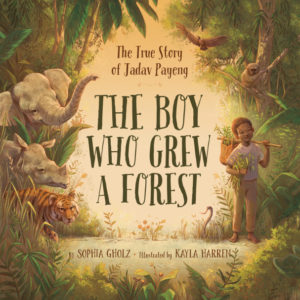



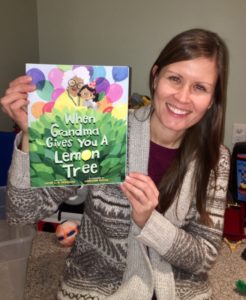 This month’s Author Interview is with Jamie L.B. Deenihan. To help give
This month’s Author Interview is with Jamie L.B. Deenihan. To help give 